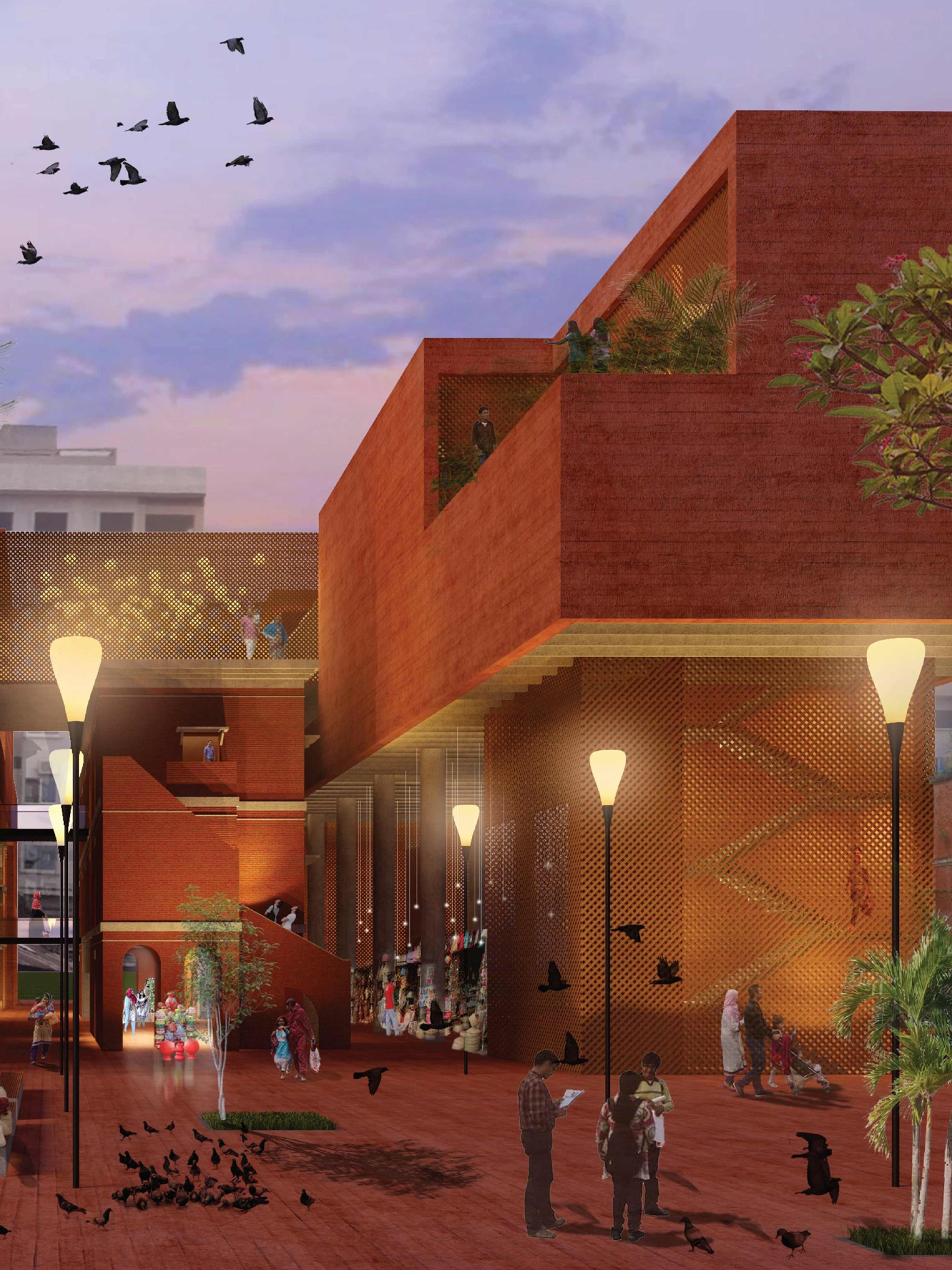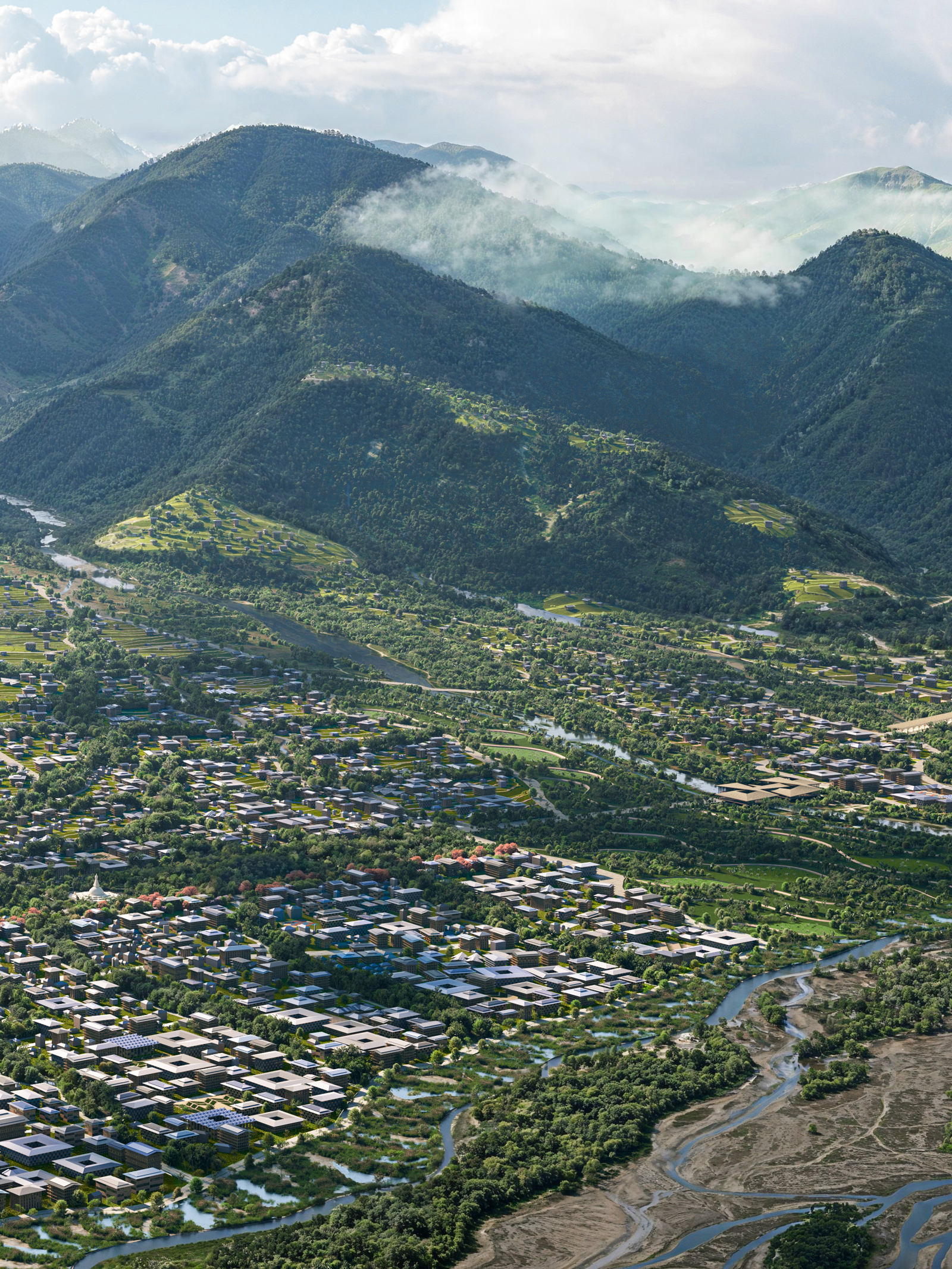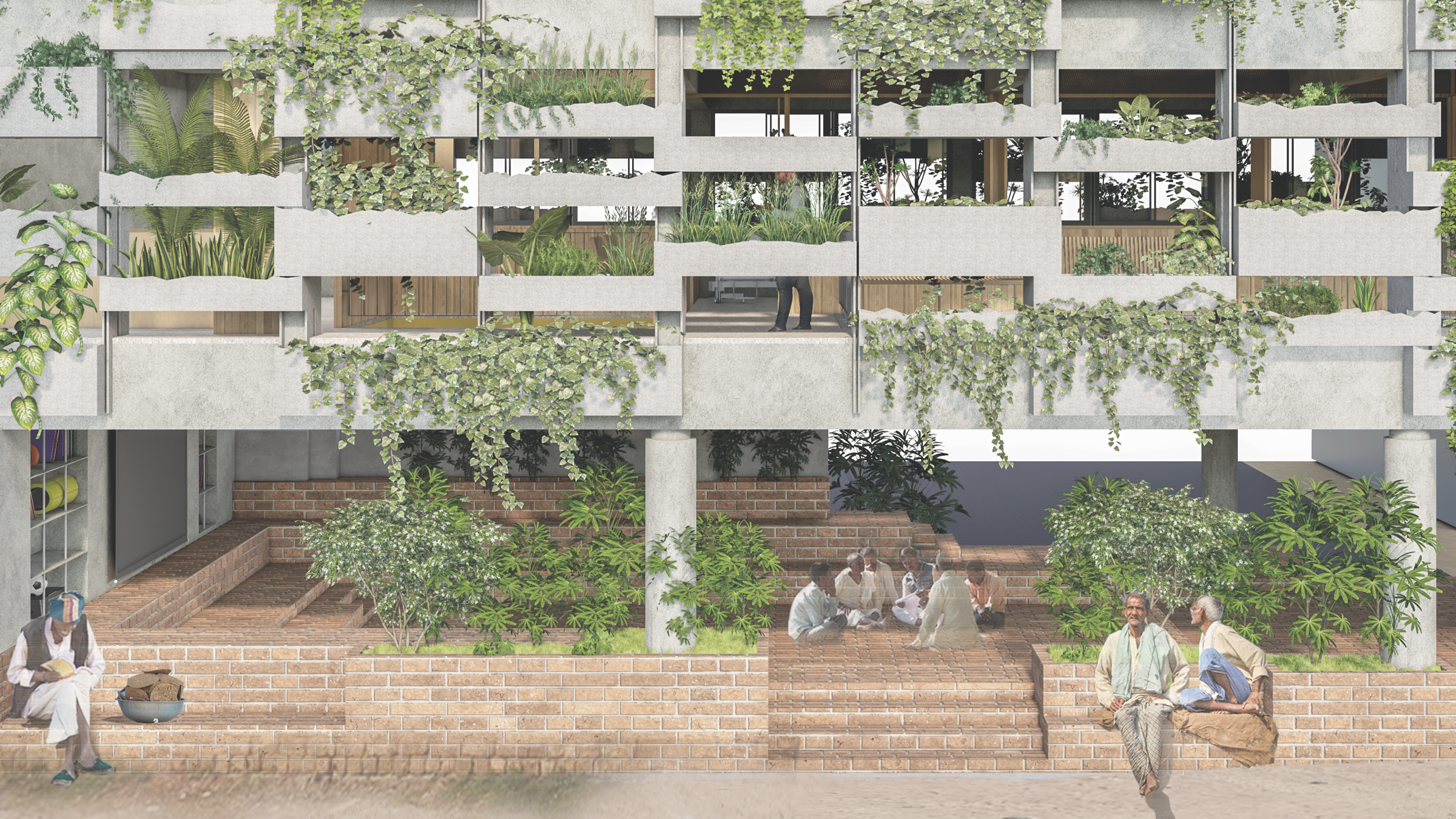Ecological corridor transforming flood infrastructure into public landscape

The Pingshan River Blueway landscape design in Shenzhen exemplifies sustainable landscape development, thoughtfully blending environmental restoration with community enrichment. Spanning a sprawling 40 kilometers, the ambitious Blueway reinvents the riverfront into a vibrant, accessible recreational corridor that celebrates local heritage and biodiversity. Utilizing passive design measures, the project introduces extensive tree canopies for natural shade and aligns open spaces to harness prevailing winds, effectively reducing urban heat. This approach significantly lowers emissions, complemented by the strategic reuse of existing materials like recycled asphalt and repurposed construction debris, minimizing waste and embodied carbon.
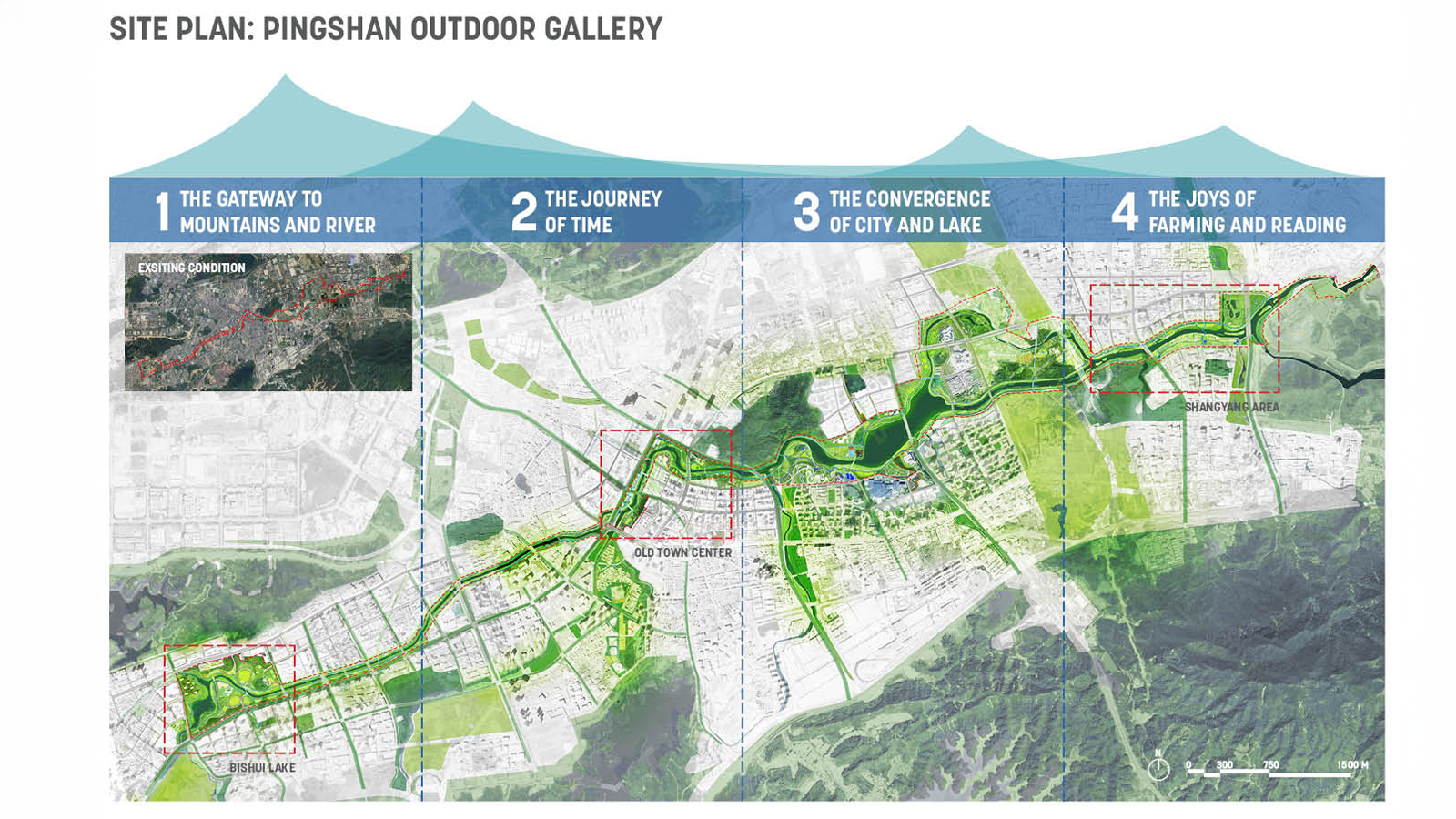

Ecologically, the initiative restores native plant communities, reestablishing habitats and nurturing natural biodiversity through integrated mountain, foothill, and riverbank corridors. Deep pools and shallow shoals enhance the river's natural functions, supporting aquatic life and promoting ecological resilience. Simultaneously, two lakes and five reservoirs bolster environmental water flow, safeguarding against climate impacts and flooding risks.
Participatory design process is key in this project, involving local Hakka communities, scholars, and diverse stakeholders to reflect regional traditions and cultural identity. Economically viable, the project leverages a publicly funded, cost-conscious model that anticipates substantial long-term value through revitalized land use and boosted riverfront commerce. Aesthetically and culturally integrated, the design draws deeply from the area’s Hakka heritage, creating a gallery-like experience between mountains and rivers that merges modern life with cultural spirit. Framing distinct views of Pingshan’s iconic mountain-river-city landscapes, the project forms a coherent visual narrative—curating buildings, bridges, roads, and public furnishings into a unified spatial journey inspired by the “Pingshan Outdoor Gallery” concept.
Jury Appraisal
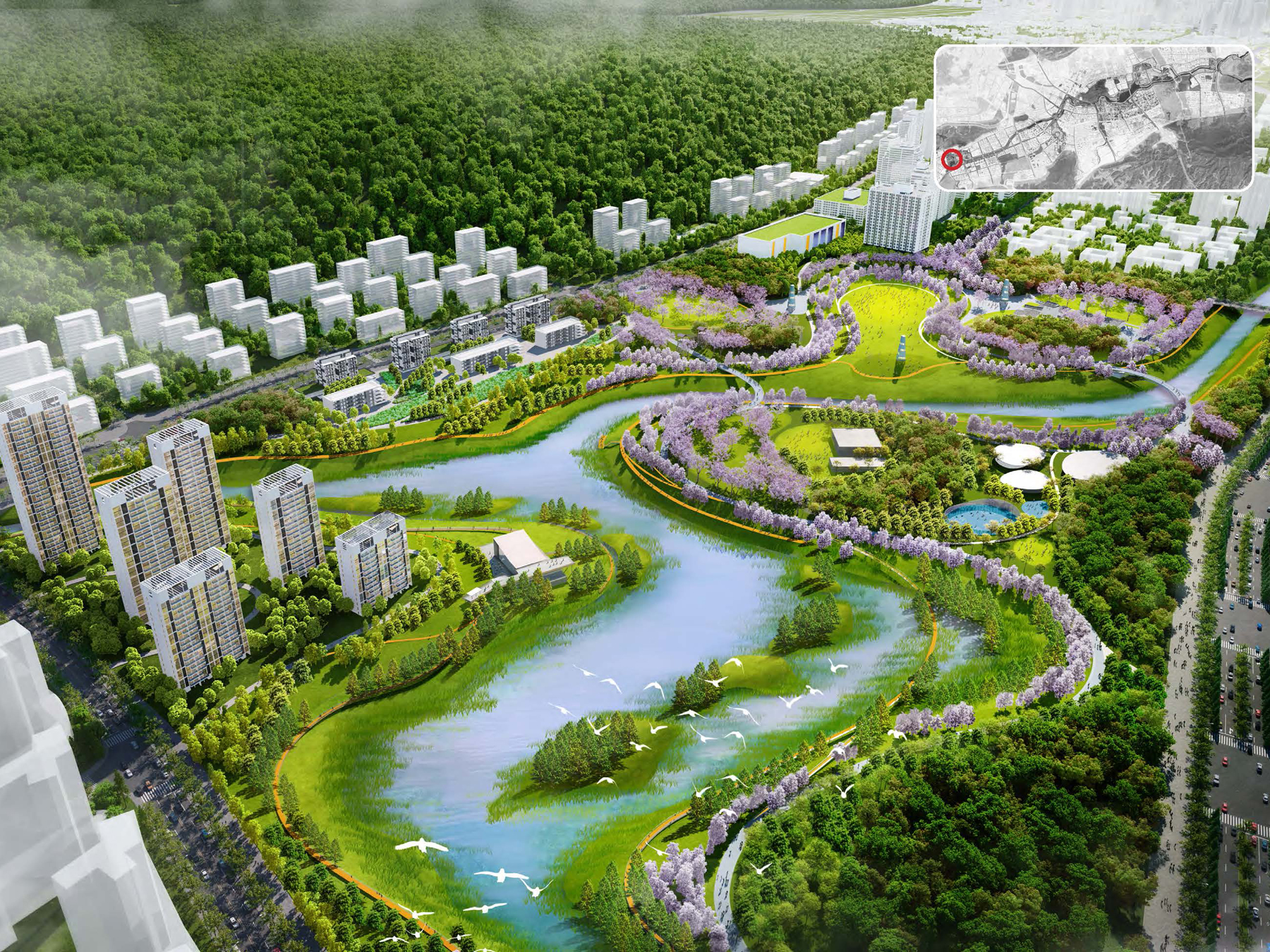
Praised by the jury for its holistic vision, the project demonstrates how community wisdom and thoughtful ecological stewardship can profoundly enhance urban environments, serving as an influential, scalable model for sustainable development globally. The jury appreciated how this project turns conventional flood infrastructure into a living system that connects people with nature, even including the option to use the land for agricultural purposes. The jury also recognized the sustainable intelligence behind the plan, which restores river ecologies while enhancing mobility and daily life in a dense urban setting. The layered, connecting design combining flood protection, water treatment, habitat corridors, and public recreation — was seen as a mature and highly transferable model, particularly at such a huge scale.
Whilst the jury noted that there are numerous river regeneration projects currently underway in China, it wished to praise this design as a sustainable development benchmark with a high relevance for cities across Asia and beyond.
Project Team

Main Authors: Tao Zhang, Dou Zhang & Tianwen Zhou, Sasaki Associates
Further Authors: Yu Zhu, Zhangkan Zhou, Qi Wang & Yuwei Zhao, Sasaki Associates
Client: CRLAND
Themes
Biodiversity & Nature-Based Solutions | Well-Being & Comfort | Resilient infrastructure
Status
Under Construction
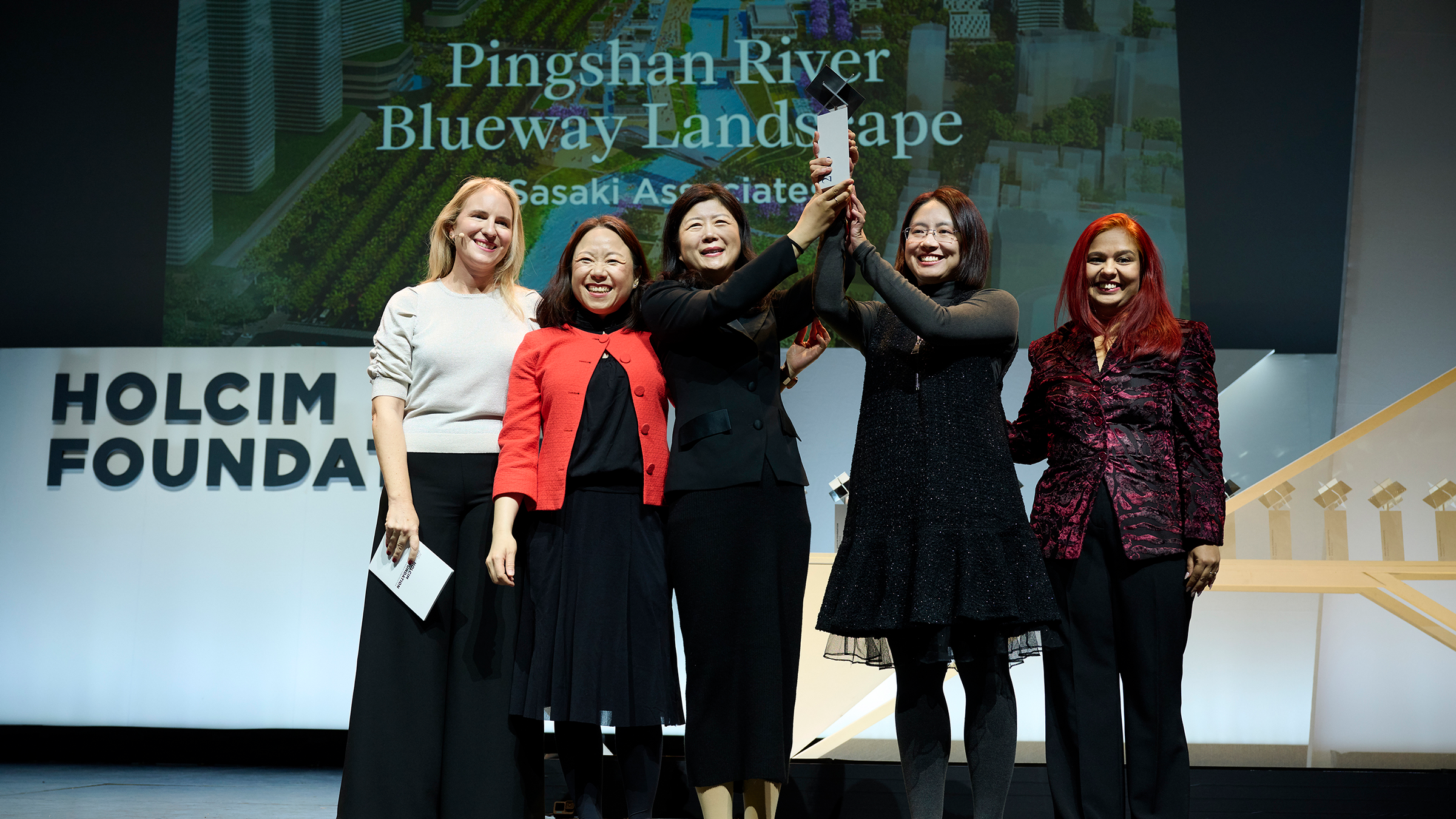
Sustainability Goals
-
Healthy Planet
Sustainable building design through passive measures
The project prioritizes sustainable design through multiple strategies, with passive measures playing a key role in maximizing energy efficiency and minimizing environmental impact. The 25-mile-long Blueway features extensive canopy trees that provide shade along pathways and public spaces while aligning open spaces with wind corridors to enhance the site’s microclimate. This improves comfort by providing natural shade and ventilation, and reduces the heat island effect. Minimizing new material consumption lowers embodied carbon, while 265 acres of reforestation sequester 55,280 tons of CO₂ annually. These efforts create a healthier, energy-efficient environment, ensuring long-term ecological resilience and well-being.
Efficient construction and operations
Many existing materials are reused or recycled to minimize construction waste, reduce material and transportation costs, and lower the project's embodied carbon. Worn asphalt from the former road is broken into small aggregates for pavements or crushed into particles for overlooks around trees. Debris from demolished buildings is repurposed into benches, reducing transportation and operation costs while preserving the site’s history. Additionally, the project commits to planting 100% native species cultivated in the region, ensuring they adapt well to site conditions, require minimal irrigation, and limit transportation needs. This approach enhances long-term sustainability while supporting a resilient and ecologically integrated landscape.
Landscape & Biodiversity Integration
The project restores an ecological network by reintroducing native plant communities from nearby mountains and promoting natural succession for near-natural forests, allowing vegetation and wildlife habitats to evolve. The blue-green system includes mountain, foothill, and riverbank corridors, along with green parks, creating diverse habitats from land to water. To enhance the river’s function, the design adapts its natural form by retaining a low water trough and creating deep pools and shallow shoals. These changes enrich the riverbed, improve hydrophilic qualities, and integrate fish channels with backwater facilities, supporting fish migration and biodiversity. Two lakes and five reservoirs will supplement environmental flow.
Land use & Transformation
The project transforms industrial land along the river into public green spaces, enhancing ecological and recreational value. Small commercial buildings are integrated into the spaces to provide services for Blueway users and activate the area. The project will drive the redevelopment of the existing residential area into a higher-density complex, freeing up more riverfront space for vegetation and public use, improving recreational value. The interwoven urban structure of development and open spaces maximizes the environmental benefits of the Blueway and the land value along the riverfront. This transformation brings environmental, economic, and social benefits, turning the site into a hub for nature, commerce, and community.
-
Thriving Communities
Participatory Design
A multi-disciplinary team of landscape architects, hydrologists, ecologists, and engineers has closely collaborated throughout the project’s design process. Residents, scholars, and government agencies have been actively engaged to ensure their voices, perspectives, and needs are integrated into the design. The team developed an in-depth understanding of the local Hakka community and their culture through extensive research, interviews, and consultations with the Hakka people, allowing the design to reflect their traditions, values, and connections to the land. This inclusive approach has fostered a shared vision, aligning the project with the community’s aspirations while addressing ecological performance and future residents’ daily needs.
Community Impact and Resilience
The project ensures full accessibility along and across the river, maximizing access from adjacent communities to create a continuous Blueway for all. A comprehensive bike path system connects seamlessly to public transportation, promoting a low-carbon lifestyle. Community programs linked to nearby buildings and resources help generate income to support the long-term operation. A water management plan mitigates climate change impacts. Existing hard edges will be converted to soft landscapes, and more room is carved into the riverbed to reduce floods. A prevention and control system, including upstream detention, midstream dredging, downstream drainage, and bank management, will meet once-in-a-hundred-year flood control requirements.
-
Viable Economics
Financial Feasibility
As a publicly funded project, financial viability is considered from the start. Despite a limited budget, the project ensures financial feasibility through a comprehensive strategy. It reduces construction costs by reusing existing materials and structures, using locally sourced materials, and applying cost-saving designs, such as super graphics on existing concrete to create a bold effect affordably. Future operation costs are minimized by planting native species that require little irrigation and maintenance. The Blueway will also catalyze future development along the river, promoting long-term financial benefits for the city by reorganizing riverfront land use, improving accessibility, and reconfiguring the river-development interface.
-
Uplifting Places
Aesthetic Qualities and Cultural Integration
Originally an agricultural place of the Hakka people for over 300 years, the Blueway—developed under the idea of the Pingshan Outdoor Gallery—creates a gallery-like experience between mountains and rivers, integrating modern life with Hakka culture and spirit. Inspired by its natural setting, the site divides into four sections, with view corridors and vantage points along the river framing Pingshan’s mountain-river-city landscape and reinforcing its identity. A design language distilled from the Hakka heritage guides the design of buildings, bridges, roads, and furnishings, creating a unified aesthetic. The blue motif, reflecting Hakka textiles, is featured atop pavilions, paving, and planting, while native species and blue dye enhance the cultural experience.

